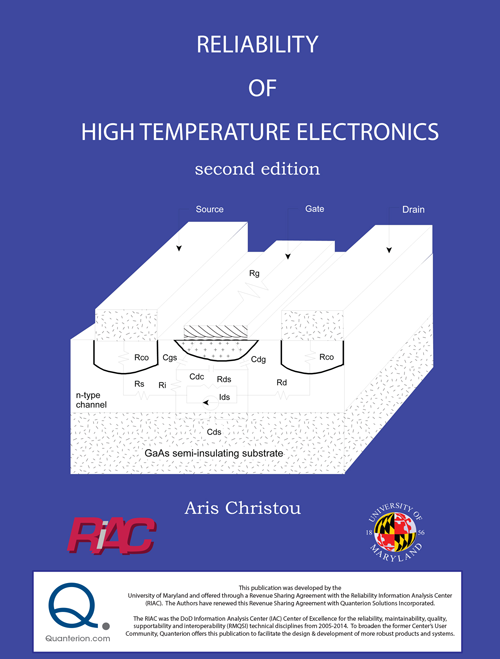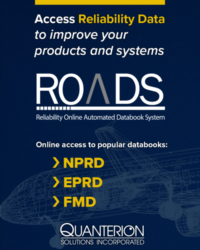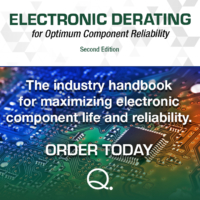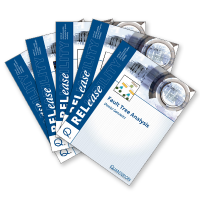1 Background on The Behavior of Bipolar and MOS Transistors and Inverters
at High Temperatures |
1 |
| 1.1 Introduction |
1 |
| 1.2 Background In High Temperature Electronics |
1 |
| 1.2.1 Cmos And BJT High Temperature Operation |
2 |
| 1.2.2 Latch-Up |
8 |
| 1.3 High Temperature Silicon Device Behavior, Summary |
10 |
| 2 Bipolar Junction Transistor At Elevated Temperatures |
15 |
| 2.1 Operation of The Bipolar Junction Transistor |
15 |
| 2.2 Model of The Bipolar Junction Transistor |
19 |
| 2.3 Temperature Dependent Parameters of The BJT |
22 |
| 2.4 Temperature Dependence of Current Gain (β) |
25 |
| 2.5 Temperature Dependence Of Bjt Inverter Circuit |
26 |
| References |
29 |
3 Computer Simulations of Bipolar Junction Transistor and Experimental
Validation |
31 |
| 3.1 Simulations at Elevated Temperatures |
31 |
| 3.1.2 Pspice Simulations for High Temperature Electronics |
33 |
| 3.2 Experimental Analysis of BJT Behavior |
35 |
| 3.2.1 Beta Versus Temperature |
35 |
| 3.3 Bjt Inverter Voltage Transfer Characteristic at Elevated Temperatures |
37 |
| 3.4 Electrical Measurements To Obtain BJT Thermal Resistance |
39 |
| 3.5 Observations of Bipolar Junction Transistor Behavior at High Temperatures |
41 |
| 3.5.1 Beta Versus Temperature Dependence |
41 |
| 3.6 Bipolar Transistor Voltage Transfer Characteristics (VTC) |
42 |
| References |
45 |
4 Introduction To The High Temperature Behavior of The Metal Oxide Silicon
Field Effect Transistor |
47 |
| 4.1 Physical Operation of a MOSFET |
47 |
| 4.2 Temperature Dependent Parameters |
50 |
| 4.3 N-MOS Inverter Voltage Transfer Characteristic ( VTC ) |
51 |
| 4.4 Cmos Inverter Voltage Transfer Characteristic |
53 |
| 4.5 Propagation Delay of The Cmos Inverter |
58 |
| 4.6 Simulations of The NMOS Inverter VTC |
61 |
| 4.6.1 Computer Simulations |
61 |
| 4.6.2 Pspice Simulation |
62 |
| 4.7 Computer Simulations of The Cmos Inverter VTC |
63 |
| 4.7.1 Program Simulation |
63 |
| 4.7.2 Pspice Simulation |
64 |
| 4.7.3 Propagation Delay of The CMOS Inverter |
65 |
| 4.8 Experimental Analysis of The NMOS Inverter |
67 |
| 4.9 Observations of MOSFET Behavior at High Temperatures |
69 |
| 4.9.1 NMOS Inverter |
69 |
| 4.9.2 CMOS Inverter |
70 |
| 4.10 Conclusions |
71 |
| 4.11 Recommendations for Further Work |
72 |
| References |
73 |
5 High Temperature Modeling and Thermal Characteristics of GaAs
MESFETs |
75 |
| 5.1 Introduction |
75 |
| 5.2 State-Of-The-Art for Modeling High Temperature Characteristics |
77 |
| 5.3 Chapter Outline and Objectives |
78 |
| 5.4 Physical Properties of MESFETs at Elevated Temperatures |
79 |
| 5.4.1 Gallium Arsenide |
79 |
| 5.4.2 Energy Gaps and Intrinsic Carrier Densities |
79 |
| 5.5 Carrier Mobilities and Saturation Velocity |
84 |
| 5.6 Modeling of MESFETs |
88 |
| 5.6.1 Introduction |
88 |
| 5.6.2 Principles of MESFET Operation |
89 |
| 5.6.3 Linear Region of MESFET Characteristics |
90 |
| 5.6.4 Saturation Region Model |
91 |
| 5.7 Empirical MESFET Model |
92 |
| 5.8 Temperature Related Properties of GaAs MESFET |
96 |
| References |
101 |
6 Computer Simulation and Electrical Measurements of The MESFET
Temperature Dependence |
103 |
| 6.1 Introduction To The Simulation of Temperature Dependence |
103 |
| 6.2 Simulation Results for The MESFET |
105 |
6.2.1 Comparison of MESFET Simulation: Hyperbolic and
Quadratic Model |
105 |
| 6.2.2 Simulation Results of The ZTC Bias Point of GaAs MESFET |
114 |
| 6.2.3 Temperature Dependent Characteristics of The GaAs MESFET |
126 |
| 6.2.4 Electrical Measurement at Elevated Temperatures |
135 |
6.3 Thermal Measurements of GaAs Devices Using IR Microscopy Techniques
|
138 |
| 6.3.1 Operation Principle of The IR Microscope |
138 |
| 6.3.2 IR Microscopy Measurement Results |
140 |
| 6.4 Finite Element Analysis of Heat Transfer In The GaAs MESFET |
142 |
| 6.4.1 General Mathematical Assumptions and Model |
142 |
| 6.4.2 Simulation Results and Comparison with Measurements |
143 |
| 6.5 Summary and Conclusions |
146 |
| 7 Temperature Effects of Heterostructure Transistors and Circuits |
151 |
| 7.1 Introduction |
151 |
| 7.2 Physical Properties of AlGaAs/GaAs HFET |
152 |
| 7.2.1 AlGaAs/GaAs HFET Device Structures |
152 |
| 7.2.2 Principles of HFET Operation |
153 |
| 7.2.3 Modulation Doping |
154 |
| 7.3 Aim-Spice HFET Model |
155 |
| 7.3.1 HFET Model for Aim-Spice Input File |
156 |
| 7.3.2 Current-Voltage Model Used By Aim-Spice |
156 |
| 7.4 Current-Voltage Characteristics of AlGaAs/GaAs Hfet |
159 |
| 7.4.1 Intrinsic Current-Voltage Characteristics |
159 |
| 7.4.2 Extrinsic Current-Voltage Characteristics |
161 |
| 7.5 Temperature Dependent Characteristics of HFET |
164 |
| 7.5.1 Energy Gap And Intrinsic Carrier Concentration |
164 |
| 7.5.2 Threshold Voltage and Dielectric Permittivity |
168 |
| 7.5.3 Saturation Velocity and Electron Mobility |
169 |
| 7.5.4 Temperature Dependence of Current-Voltage Characteristics |
174 |
| References |
179 |
| 8 High Temperature Behavior of The HFET Inverter |
181 |
| 8.1 Introduction |
181 |
| 8.2 Inverter Circuits |
181 |
| 8.2.1 Basic Inverter |
181 |
| 8.2.2 Direct-Coupled Fet Logic (DCFL) Inverter |
183 |
| 8.2.3 Buffered Fet Logic (BFL) Inverter |
183 |
| 8.3 Failure Mechanisms of AlGaAs/GaAs HFET at Elevated Temperatures |
185 |
| 8.3.1 Interdiffusion |
185 |
| 8.4 Kink Effect |
190 |
| 8.5 Ohmic Contact Resistance Increase |
191 |
| 8.6 Thermal Runaway Effect |
192 |
| 8.7 Gate Degradation |
192 |
| 8.8 Conclusions |
193 |
| References |
197 |
| 9 Elevated Temperature Power Semiconductor Devices |
199 |
| 9.1 Introduction |
199 |
| 9.2 Power Semiconductor Device Materials |
200 |
| 9.3 Power Semiconductor Device Reliability |
201 |
| 9.3.1 Device Failure Modes at Elevated Temperatures |
202 |
| 9.4 Power Transistor Packaging |
204 |
| 9.4.1 Materials for Power Transistor Packaging |
205 |
| 9.5 Power Package Failure Modes and Reliability |
209 |
| 9.5.1 Thermomechanical Stress |
209 |
| 9.5.2 Moisture Related Failure Mechanisms |
211 |
| 9.5.3 Thermal Fatigue |
211 |
| 9.6 Heat Dissipation In Power Transistors |
212 |
| 9.7 Power Dissipation In Power Transistors |
213 |
| 9.7.1 Thermal Management |
213 |
| 9.8 Simulation of Elevated Temperature Effects |
213 |
| 9.8.1 Process Simulation |
214 |
| 9.8.2 Numerical Device Simulation |
215 |
| 9.8.3 Device Simulation |
215 |
| 9.8.4 Package Simulation |
217 |
| 9.9 Tests and Measurements |
217 |
9.9.1 Electrothermal Models For Measurement of Power Device
Parameters |
218 |
| 9.9.2 Thermal Impedance Measurements |
219 |
| References |
221 |
| 10 Design Optimization of High Temperature Electronic Packaging |
225 |
| 10.1 Introduction |
225 |
| 10.2 Design Constraints Imposed by Temperatures |
226 |
| 10.2.1 Die Information |
226 |
| 10.2.2 Mounting Platform Technology Information |
227 |
| 10.3 High Temperature Packaging Design Goals |
227 |
| 10.3.1 Performance |
227 |
| 10.3.2 Reliability |
228 |
| 10.4 Applying The High Temperature Design Guidelines |
228 |
| 10.4.1 Die to Lead Interconnect |
230 |
| 10.4.2 Lead |
231 |
| 10.4.3 Case |
231 |
| 10.4.4 Die and Substrate Attach |
233 |
| 10.4.5 Lead Seals |
233 |
| 10.4.6 Lid and Lid Seal |
233 |
| 10.5 High Temperature Electronic Package |
234 |
| 11 Introduction to The High Temperature Reliability Issues of MMICs |
245 |
| 11.1 Background |
245 |
| 11.2 State-Of-The-Art of MMIC High Temperature Behavior |
247 |
| 11.3 Chapter Outline |
249 |
| References |
253 |
| 12 MMICs and Monte Carlo Technique |
257 |
| 12.1 Monolithic Microwave Integrated Circuits for High Temperatures |
257 |
| 12.1.1 MMIC Status |
257 |
| 12.1.2 MMIC Performance |
258 |
| 12.1.3 MMIC Applications |
259 |
| 12.2 Monte Carlo Techniques for Design and High Temperature Prediction |
260 |
| 12.2.1 Introduction to Monte Carlo Methods |
260 |
12.2.2 High Temperature Reliability Simulations by Monte Carlo
Techniques |
262 |
| References |
265 |
| 13 MMIC High Temperature Reliability |
269 |
| 13.1 Introduction |
269 |
| 13.2 MMIC High Temperature Reliability Mathematics |
271 |
| 13.3 Investigations of MMIC Reliability |
277 |
| 13.4 Concerns of High Temperature MMIC Reliability |
279 |
| References |
283 |
| 14 MMIC High Temperature Testing Methodology and Analysis |
287 |
| 14.1 Introduction to Arrhenius Model |
287 |
| 14.2 Accelerated Life Tests |
291 |
| 14.2.1 Introduction |
291 |
| References |
295 |
| 15 MMIC Circuit High Temperature Analysis |
297 |
| 15.1 MMIC Circuit Modeling for High Temperature Design |
297 |
| 15.1.1 Introduction |
297 |
| 15.1.2 Operation Principles of MESFET |
298 |
| 15.1.3 Theoretical I-V Characteristics of GaAs MESFET |
302 |
| 15.1.4 GaAs MESFET Spice3 Model |
305 |
| 15.2 MMIC Spice Circuit Analysis |
311 |
| 15.2.1 Spice Analysis For MMICs |
311 |
| 15.2.1.1 Transimpedance Amplifier (TIA) |
311 |
| 15.2.1.2 EG-6101 Low-Noise Amplifier |
314 |
| 15.3 The Methodology to Determine the Correlation Matrix of MMICs |
314 |
| 15.3.1 Introduction to Correlation Mathematics |
314 |
| 15.3.2 Statistical Model for the Correlation between MMIC Devices |
316 |
| 15.3.3 The Methodology to Estimate the Correlation of MMICs |
318 |
| References |
321 |
| 16 Monte Carlo High Temperature Reliability Model for MMICs |
325 |
| 16.1 Introduction |
325 |
| 16.2 The Methodology to Estimate MMIC High Temperature Performance |
325 |
| 16.2.1 The Joint Probability Method Via Monte Carlo Simulation |
325 |
| 16.2.2 The Non-Markovian Method Via Monte Carlo Simulation |
327 |
| 16.2.3 The MMIC Monte Carlo Technique |
328 |
| 16.3 MMIC Circuit Reliability Model |
328 |
| 16.3.1 The Given Conditions For MMIC Reliability Model |
328 |
| 16.3.2 Procedures to Model MMIC Reliability |
331 |
| 16.3.3 Validation of MMIC High Temperature Model |
338 |
| 16.3.3.1 EG-6101 LNA and TIA High Temperature Analysis |
338 |
16.3.3.2 EG-6010 LNA and EG-6203 Power Amplifier Reliability
Analysis |
341 |
| 16.3.3.3 Simulation Results |
341 |
| References |
345 |
| A1 Software and Manual, User’s Guide |
347 |
| A1-1 Introduction |
347 |
| A1-2 How to Run Device2 |
347 |
| A1-2-1 Detailed Description for F1 |
348 |
| A1-3 Detailed Description for Function Key 2 |
349 |
| A1-4 Description for F3 |
351 |
| A1-5 Description for F4 |
352 |
| A1-6 Description for F5 and F6 |
354 |
| A1-7 Description for F7 |
355 |
| A1-8 Description for F8 |
356 |
| A2 Program for Calculation of The Current-Voltage Characteristics of The HFET |
357 |
| B Program for Calculation of The Temperature Dependent Characteristicsof The HFET |
359 |
| B-1 For Calculation of The Temperature Dependence of Energy Gap for GaAs |
359 |
B-2 For Calculation of The Temperature Dependence of Intrinsic Carrier
Concentration of GaAs |
360 |
| B-3 For Calculation of The Temperature Dependence of Saturation Velocity |
361 |
B-4 For Calculation of The Temperature Dependence of Electron Mobility at
Three Different Concentration |
362 |
B-5 For Calculation of The Temperature Dependence of Current-Voltage
Characteristics |
364 |
B-6 For Calculation of The Temperature Dependence of Drain-To-Source
Saturation Current |
367 |
B-7 For Calculation of The Temperature Dependence of Extrinsic Drain Saturation
Voltage |
369 |
| C Aim-Spice Simulation Circuits and Input Files |
371 |
| C-1 Simulation Circuit For Current-Voltage Characteristics |
371 |
| C-2 Input File for I-V Characteristics (Ids Versus Vds) (for Vg = 0.3v only) |
371 |
| C-3 Input File for I-V Characteristics (Ids Versus Vg) (for Vdd = 1v only) |
371 |
| C-4 Direct-Coupled FET Logic (DCFL) Inverter Circuit |
372 |
| C-5 Input File for Direct-Coupled Fet Logic (DCFL) Inverter |
372 |
| C-6 Buffered FET Logic (BFL) Inverter Circuit |
373 |
| C-7 Input File for Buffered FET Logic (BFL) Inverter |
373 |







